|
With the prepared tooth in your hand (not screwed into the typodont), apply a thin layer of BLUE wax to the preparation. The wax should be of even thickness (approximately 0.5mm) and cover the mesial half of the crown (prepared tooth surface). The wax should go to and slightly beyond the cavosurface margin of the preparation initially. Remove gross excess wax now. The final finishing and refinement of the margins will be managed at a later stage in the waxing procedure. The margins will be sealed and properly contoured using the beavertail portion of the BEAVERTAIL/ACORN burnisher in one of the last steps of the procedure. Use the PKT1 instrument to apply the wax. There should be no voids in the wax.
|
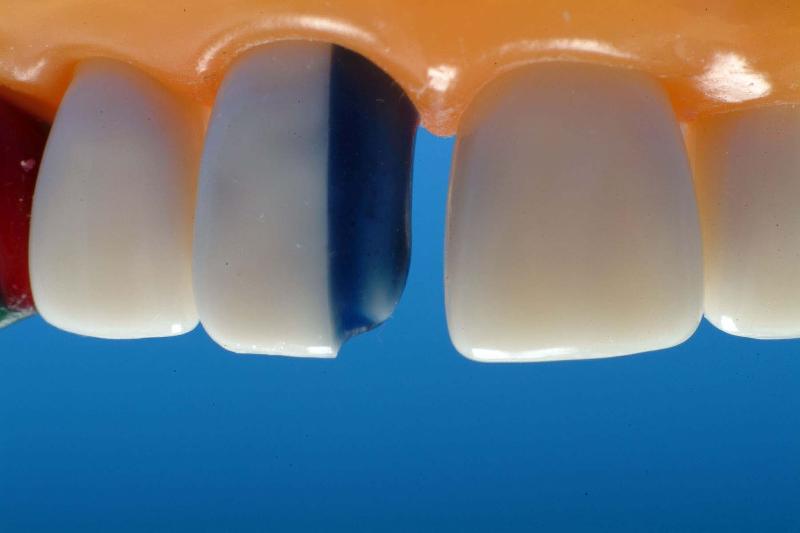
Initial layer of wax
Labial View
|
|
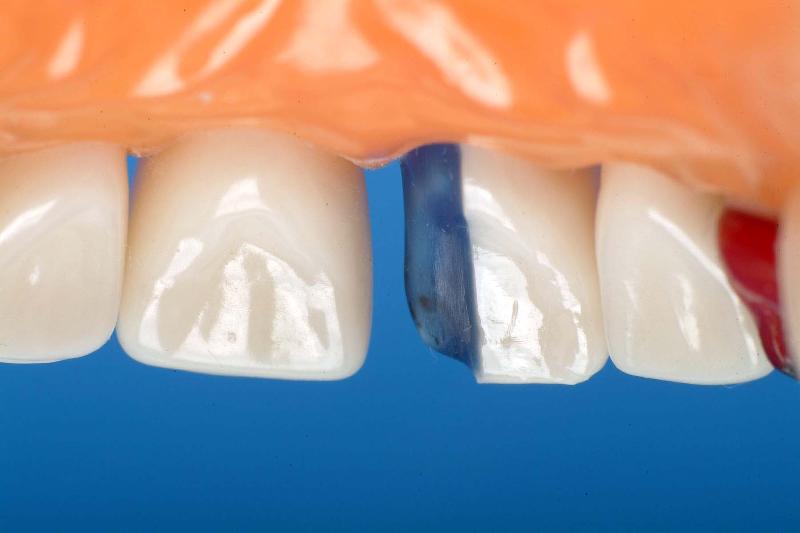
Initial layer of wax
Lingual View
|
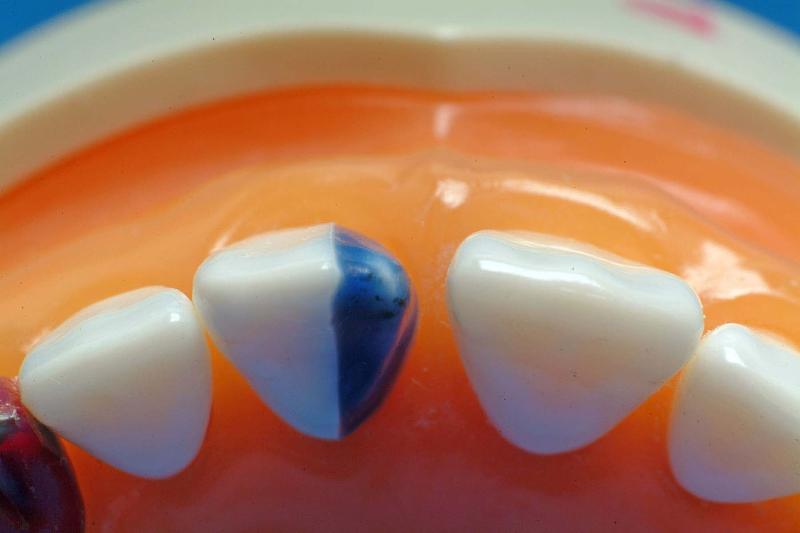
Initial layer of wax
Incisal View
|
Step 2 Establishing Mesial Contact
|
|
|
Screw the prepared tooth into the typodont. Using RED wax and the PKT1 instrument, add a cone to contact the mesioincisal portion of the adjacent maxillary central incisor. This step establishes the contact that must be maintained throughout this exercise. The position of the contact coincides with the mesial crest of curvature of this tooth, which is in the incisal third of the crown. Evaluate the amount and location of the wax cone from the labial, lingual and incisal views as shown below.
|
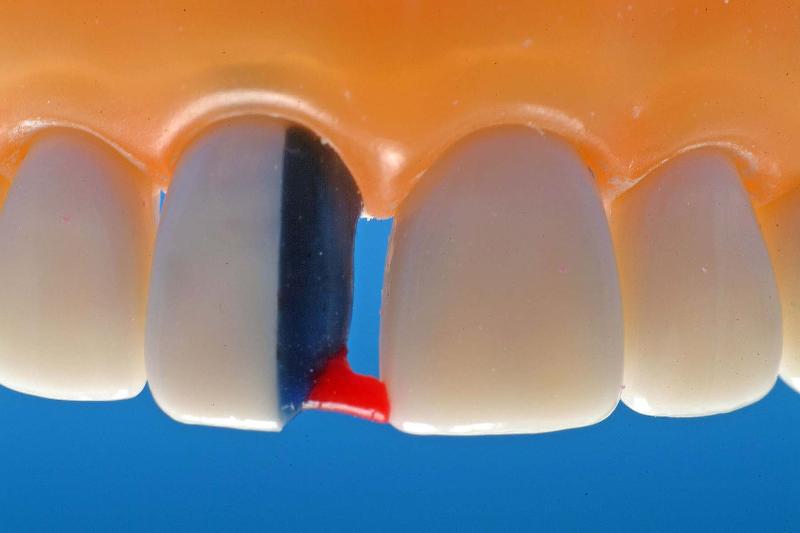
Establishing mesial contact
Labial View
|
|
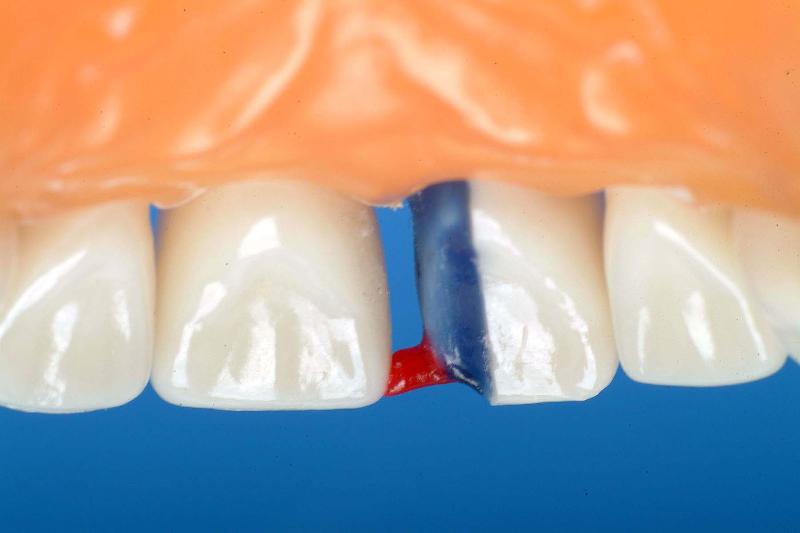
Establishing mesial contact
Lingual View
|
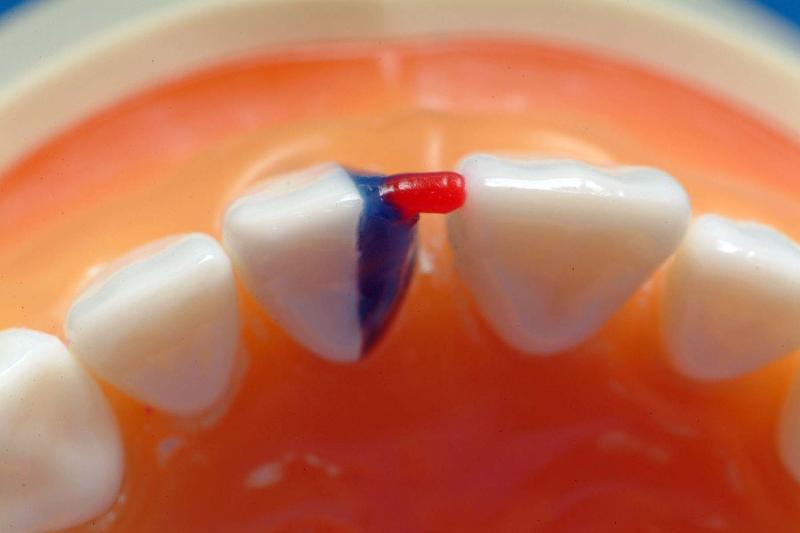
Establishing mesial contact
Incisal View
|
Step 3 Establishing the Incisal Ridge
|
|
|
Using a PKT1 and WHITE wax, establish the incisal ridge. Evaluate amount and location of wax from the labial, lingual and incisal views. The goal is to add the correct amount of wax in the correct location using your wax instruments. Minimal carving should be required.
|
|
Step 4 Establishing the Contour Bars
|
|
|
Remove the tooth from the typodont to begin this step. Using a PKT1 and GREEN wax, establish the mesiolabial contour bar (labial view). Follow that by establishing the cingulum and mesiolingual contour bar (lingual view). Screw the tooth back into the typodont. Evaluate amount and location of wax from the labial, lingual and incisal views. Assess the contact after adding the mesiolingual contact bar. Carefully close the typodont. If the contact is heavy, heat up the wax to achieve an ideal location, size and magnitude of the contact. See the final picture for the location and size of the contact.
|
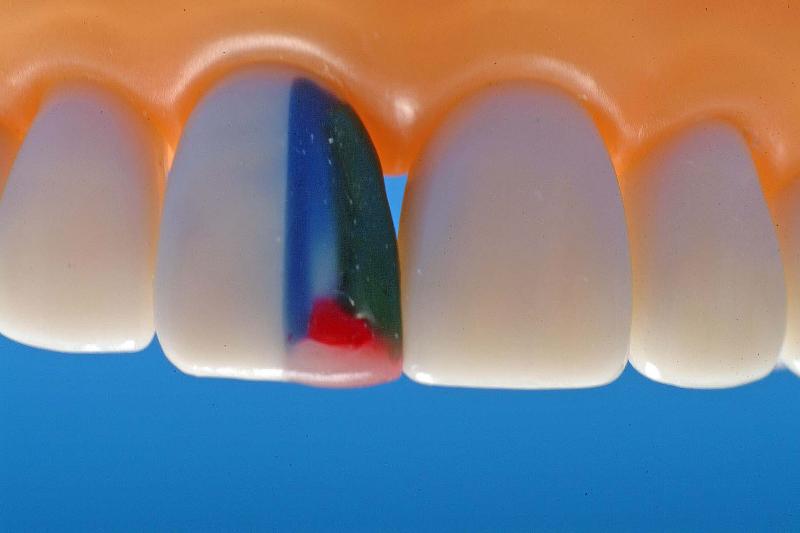
Incisal ridge and mesiolabial contour bar
Labial View
|
|
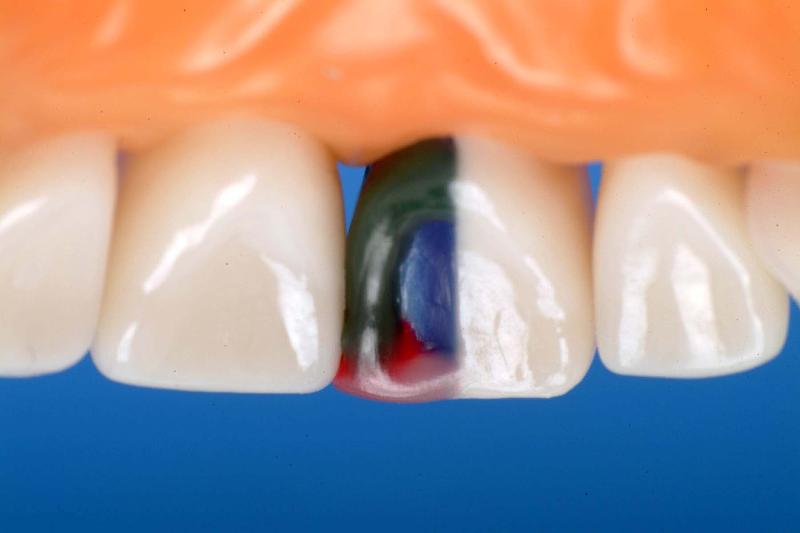
Incisal ridge, mesiolingual contour bar and cingulum
Lingual View
|
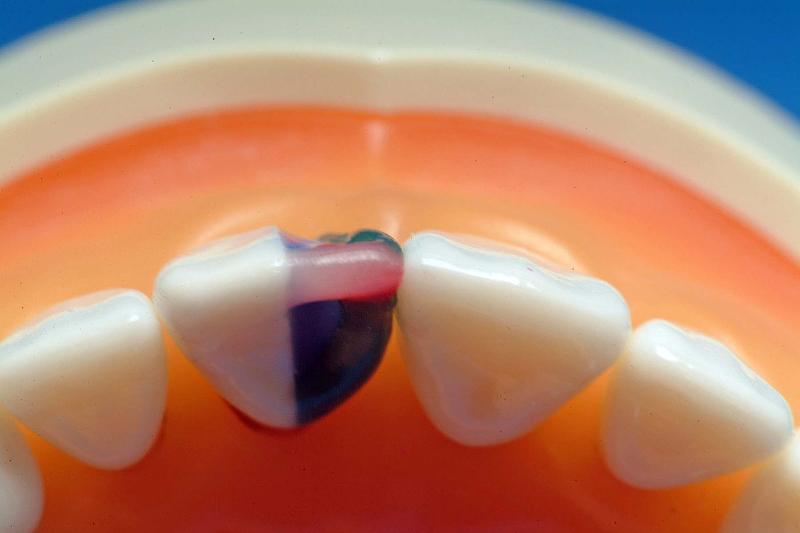
Incisal ridge, mesiolabial and mesiolingual contour bars and cingulum
Incisal View
|
Step 5 Final Steps

This content requires HTML5 & Javascript or Adobe Flash Player Version 9 or higher.
Click and hold the cursor down on the 3D model above to rotate the model (or click on the 3D model and use the arrow buttons).
|
|
|
Fill in the remaining missing tooth structure using the PKT1 or PKT2 instruments using BLUE wax. Most of this step can be completed with the tooth out of the typodont. Make sure you don't add wax to the contact area. Use the BEAVERTAIL/ACORN burnisher, the CD 4/5 (discoid cleoid) carver to complete the final contour and finish of the wax-added exercise. Use a piece of nylon stocking or pantyhose to complete the finish. Screw the tooth back into the typodont and evaluate. Make sure margins are sealed, contour is ideal, contact has been established and the surface is smooth.
|
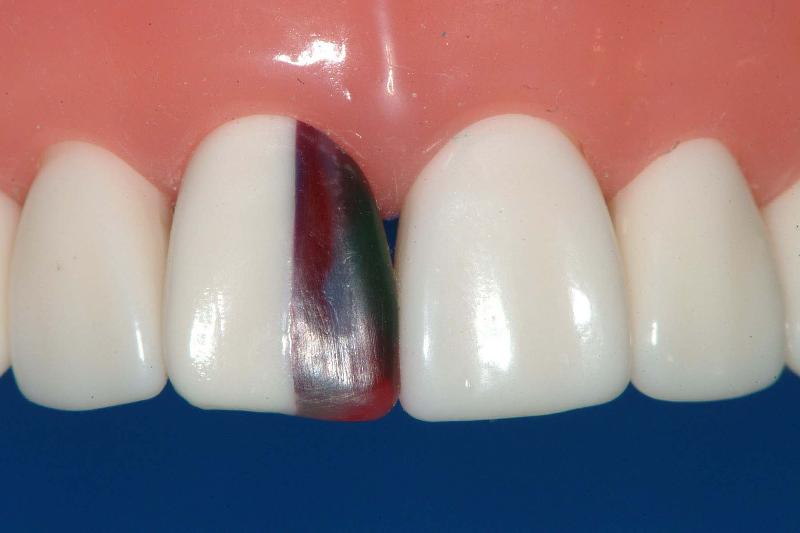
Final wax-added exercise
Labial View
|
|
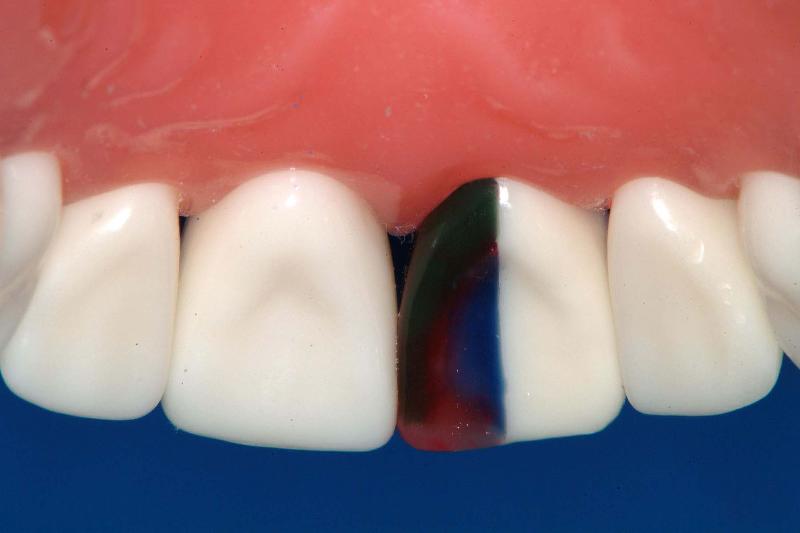
Final wax-added exercise
Lingual View
|
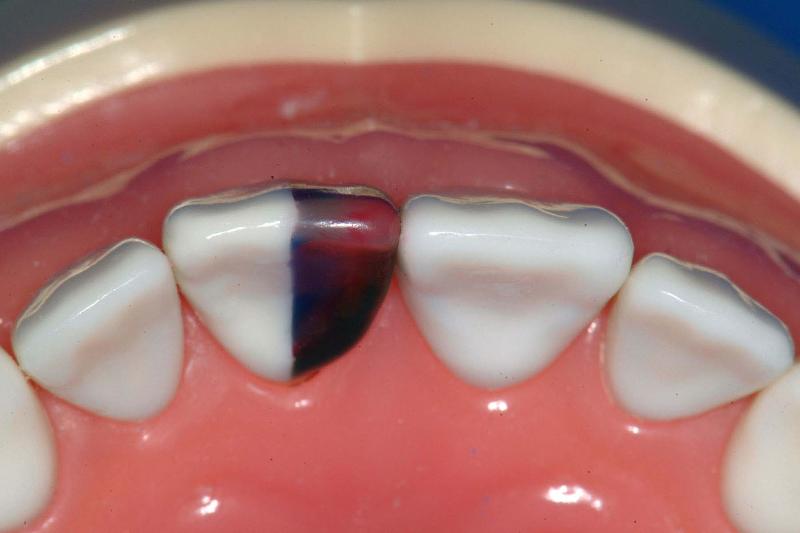
Final wax-added exercise
Incisal View
|
Contact position and size
The incisal ridge of the mandibular right central incisor contacts the mesial marginal ridge of the maxillary right central incisors in maximum intercuspation.
|
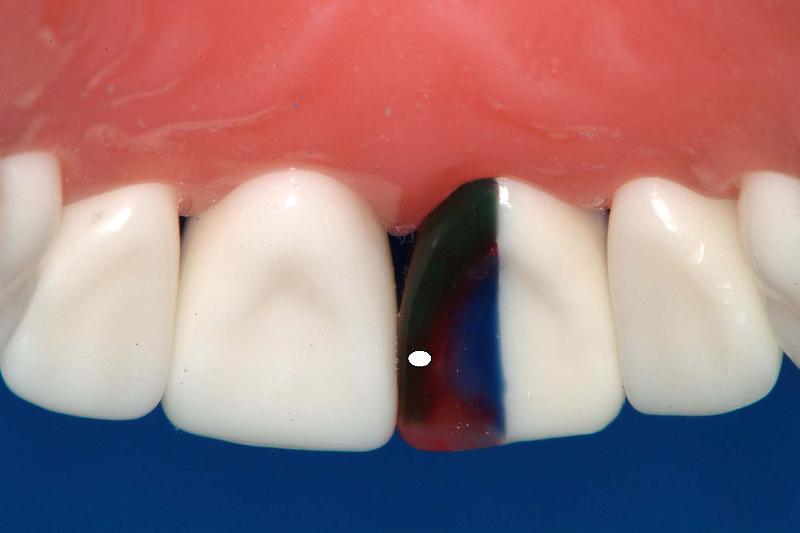
Lingual View
|
![]() This content requires HTML5 & Javascript or Adobe Flash Player Version 9 or higher.
This content requires HTML5 & Javascript or Adobe Flash Player Version 9 or higher.












